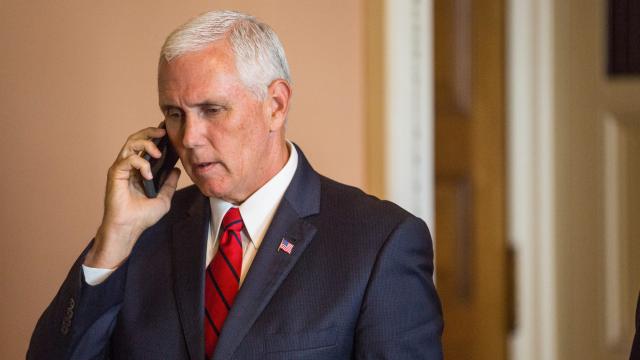The U.S. Constitution provides instructions for how to remove a President from office if they are unfit to do their job — gravely wounded, for example, or mentally unstable. The process could also be used if the President is incapacitated, for example if they were sedated and on a ventilator.
The instructions were ratified as an amendment in 1967, after John F. Kennedy’s assassination. Until that point, the Constitution just vaguely referred to the fact that a President could be removed for “Inability to discharge the Powers and Duties of said Office.”
When can the 25th amendment be invoked for an unfit U.S. president?
The answer: whenever the Vice President and a majority of the Cabinet are ready to do so. One anonymous “senior official” wrote in a 2018 New York Times opinion piece that Cabinet members were afraid of “precipitat[ing] a constitutional crisis” by invoking the amendment, and instead chose to lie to the President and disobey him instead.
But invoking the 25th amendment would not be a constitutional crisis, a problem in government that the Constitution cannot solve. Rather, the 25th amendment is a part of the constitution that gives explicit instructions for how to remove a President who is unfit to serve.
It does not say when a President is unfit to serve, though. It doesn’t call out specific illnesses or suggest tests of any sort. It just says this, under section 4:
Whenever the Vice President and a majority of either the principal officers of the executive departments or of such other body as Congress may by law provide, transmit to the President pro tempore of the Senate and the Speaker of the House of Representatives their written declaration that the President is unable to discharge the powers and duties of his office, the Vice President shall immediately assume the powers and duties of the office as Acting President.
So if this were to play out today, the Vice President (Mike Pence) and a majority of the cabinet (these folks) would have to tell the Speaker (Nancy Pelosi) and the president pro tempore of the U.S. Senate (Chuck Grassley) that they think the President (Donald Trump) should be removed. As soon as the message was delivered, Pence would be President.
But there is another possibility: that “such other body.” Under the 25th amendment, U.S. Congress could pass a law creating a commission to evaluate whether the President is able to discharge the powers and duties of his office. Nancy Pelosi proposed today that such a commission be formed. (It’s being dismissed by some as a troll move since it’s unlikely to be passed, but one could argue this is a sensible measure during a pandemic.)
This commission’s decision does not replace U.S. Congress’s final verdict, but rather the Veep’s and cabinet’s letter. That means this body can be used to get the ball rolling and force Congress to convene and vote.
What happens next?
At this point, the U.S. President can get their powers back just by saying that they are now able to carry out the duties of the office. This is pretty straightforward if power was temporarily transferred from the President being sick or having surgery. But what if the President says they’re fine, and they’re not? The rest of section 4 of the amendment sets out a timeline:
- Within four days of the president saying they want their powers back, the Vice President and the majority of the cabinet can declare that they still believe the President is unfit.
- Congress must convene within 48 hours, if it is not already in session.
- Congress then has 21 days to decide who to believe.
To remove the President from office, both houses must vote, by a two-thirds majority, that the President is unable to discharge the duties of the office. If they can’t reach a decision within 21 days, the power goes back to the President.
If the President is removed, the Vice President takes over as President, and can appoint a new Vice President.
Will this actually ever happen?
So far, it never has. The process of removing a President was designed to be difficult so that parties would not be able to pick off each other’s officials willy-nilly. Perhaps the amendment has made it too difficult, and arguably choosing not to invoke the amendment for an unfit President would be the real constitutional crisis.
This article was originally published in September 2018 and was updated in October 2020 in the context of President Trump’s COVID-19 diagnosis.

Leave a Reply
You must be logged in to post a comment.